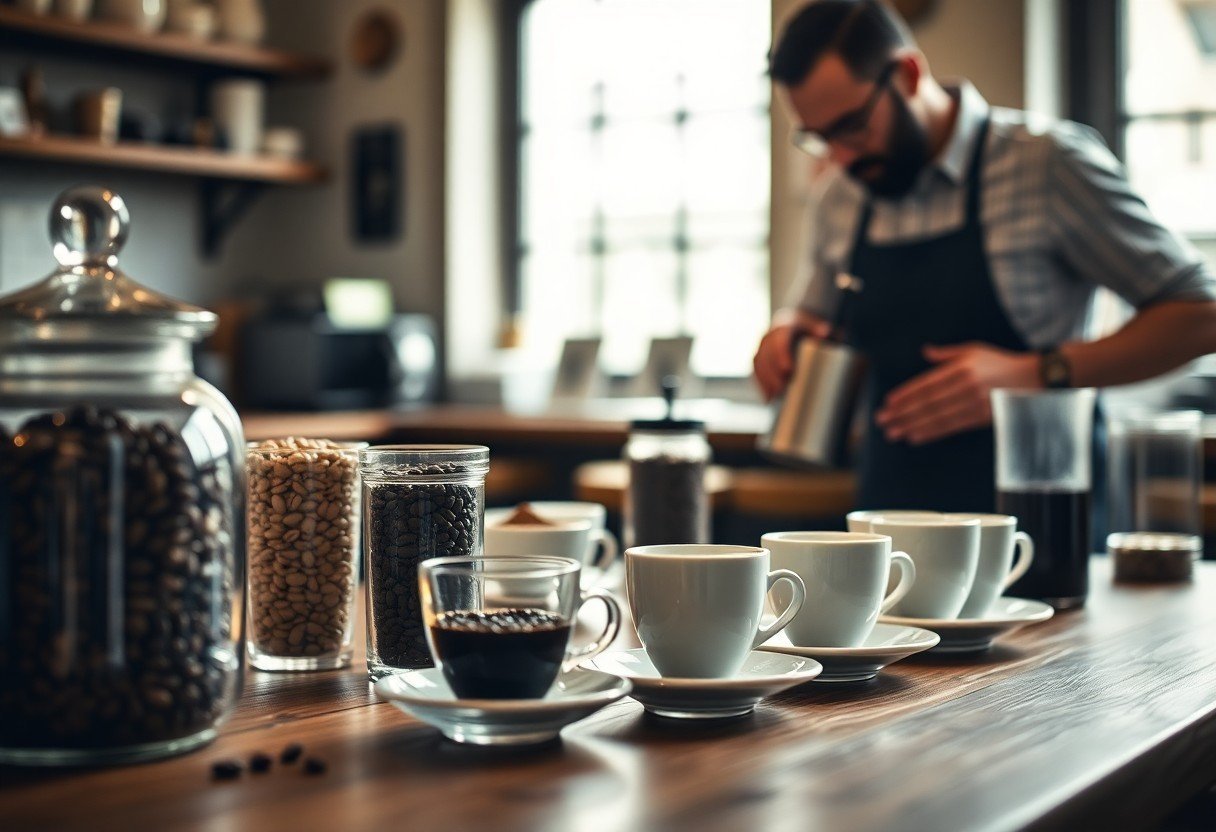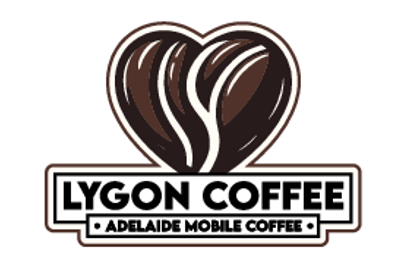Many coffee enthusiasts dream of hosting a memorable tasting event that showcases the rich flavors of fresh roasted coffee beans. With the right preparation and a few savvy tips, you can transform your gathering into a delightful experience that stimulates the senses and fosters conversation. From selecting the perfect beans to creating a cozy atmosphere for your guests, this guide will help you execute a successful tasting event. For detailed insights, check out this guide on How to Host a Coffee Tasting Party at Home.

How to Choose the Right Coffee Beans
A key element in hosting a successful tasting event is selecting the right coffee beans that will excite your guests’ palate and highlight the wonderful flavors of freshly roasted coffee.
Factors to Consider
Beans don’t just differ in flavor; they come with unique profiles based on several factors. Consider the following when choosing your coffee beans:
- Origin: Discover where the beans are sourced.
- Varietal: Lookup different coffee plant strains.
- Roast Level: Decide between light, medium, or dark roast.
- Freshness: Ensure you buy freshly roasted beans.
- Flavor Notes: Look for distinct flavors that will enhance your tasting experience.
After evaluating these factors, you are set to make informed choices for your event.
Types of Coffee Beans
Factors influencing the coffee’s taste include its type. The three most common varieties you might consider are:
- Arabica: Known for its sweet, mild flavor.
- Robusta: Strong and bold, with higher caffeine content.
- Liberica: Unique fruity and floral flavors.
This selection allows you to introduce diverse profiles at your tasting event.
| Type | Description |
|---|---|
| Arabica | Smoother, aromatic, and complex flavor. |
| Robusta | Stronger, bitter taste with a thicker crema. |
| Liberica | Distinctive fruity, floral aroma and taste. |
| Excelsa | Fruity and tart, often used for blending. |
| Specialty Beans | Artisan quality beans with unique attributes. |
Plus, understanding the various types enables you to craft an exceptional coffee tasting experience. Each type of bean offers a unique taste profile that appeals to different preferences.
- Arabica: smoother, ideal for coffee enthusiasts.
- Robusta: perfect for those who favor bolder flavors.
- Liberica: great for adventurous drinkers.
This knowledge will empower you to create a diverse and engaging coffee tasting lineup.
How to Prepare for the Tasting Event
There’s nothing quite like the anticipation of a coffee tasting event. To ensure your gathering flows smoothly, consider your guest list and send out invitations that match the theme. You should also prepare by researching the varieties of beans you will showcase, as well as the stories behind them. A great reference is Single O leads the charge: Why higher coffee prices are …, which provides insights into brand values and quality that can enhance your event’s narrative.
Setting the Scene
Assuming you’ve gathered a selection of impressive coffee beans, it’s time to create an inviting atmosphere. Arrange your tasting area with comfortable seating, good lighting, and a few decorative touches that reflect the coffee theme. Consider playing background music that complements the vibe but isn’t distracting. Your objective is to create a relaxed environment where guests can savor each sip and engage in conversation.
Essential Equipment
With the right tools, your coffee tasting can become an unforgettable experience. To start, you’ll need quality coffee grinders, brewing devices, and tasting cups. Additionally, having a scale to measure coffee and water accurately will help maintain consistency in each brew. You may also want tools for cleaning up spills and keeping your area tidy during the event.
Event preparation goes beyond just having coffee beans. Ensure your grinders and brewing equipment are in working order, and consider having a variety of brewing methods such as pour-over, French press, or AeroPress to showcase diverse flavor profiles. This approach not only enhances the tasting experience but also encourages discussions among your guests about their preferences and brewing techniques.
How to Brew Coffee for Tasting
There’s an art to brewing coffee for a tasting event that allows you to highlight the unique flavors of your fresh roasted beans. Focus on precision in both your methods and your measurements to ensure each cup brings out the best characteristics of the coffee. By creating a consistent brewing environment, you’ll showcase the nuances of each bean and provide your guests with a memorable experience.
Brewing Methods
While there are numerous brewing methods at your disposal, pour-over, French press, and AeroPress are excellent choices for tasting events. Each method brings different qualities to the forefront, allowing you to explore the diverse flavor profiles of your coffee. Experimenting with different techniques will enable you and your guests to appreciate the subtleties of your meticulously roasted beans.
Measurements and Ratios
You should aim for precision when it comes to measurements and brewing ratios. A common recommendation is a 1:15 coffee-to-water ratio, though this can be adjusted depending on your preferred strength. Use a digital scale to weigh your coffee beans and water for accuracy.
Ratios play an crucial role in brewing great coffee for tasting. The ideal brew ratio can vary based on your preferred taste profile and the specific beans you are using. For example, a lighter roast may benefit from a slightly higher water ratio to allow the flavors to bloom, while a darker roast might shine with a stronger concentration. Adjusting these ratios based on your coffee’s characteristics will help you enhance flavors, creating a rich and enjoyable tasting experience for your guests.
How to Conduct the Tasting
Now that you’ve prepared your coffee selection, it’s time to conduct the tasting. Set up a comfortable and inviting space where participants can relax and enjoy the experience. As you guide them through the tasting, encourage everyone to engage their senses—feel the warmth of the cup, inhale the aromas, and savor each sip. Follow a structured approach, allowing everyone to evaluate flavors and textures before discussing their impressions.
Tasting Techniques
Any good coffee tasting starts with the right technique. Begin by evaluating the aroma, swirling the cup gently to enhance the aroma profile. Next, take a small sip, letting the coffee coat your palate as you pinpoint distinct flavors. Consider the body, acidity, and finish of each brew while noting your observations. Encouraging your guests to do the same will enrich the tasting experience.
Guided Discussion Points
Little prompts can spark engaging conversations during your tasting. Ask your guests to describe the flavors they encounter, their thoughts on the aroma, and how the coffee compares to their favorites. Encourage them to share personal stories tied to specific coffee experiences, creating a more dynamic discussion that goes beyond mere tasting.
The guided discussion points are designed to enhance your guests’ engagement with the coffee. By asking open-ended questions, such as “What flavor notes stand out for you?” or “How does this coffee make you feel?”, you can foster a deeper connection to the tasting. These conversations not only promote camaraderie but also allow everyone to gain new insights and perspectives on coffee, enriching their overall appreciation of the experience.
How to Enhance the Experience
To elevate your coffee tasting event, consider all aspects that contribute to the overall experience. Engage your senses by incorporating visually appealing presentations, informative guides about each coffee, and a relaxed atmosphere. Encourage guests to ask questions, share perceptions, and bond over their coffee journey. By adding thoughtful elements, you can foster a memorable experience that resonates long after the event.
Food Pairings
Food plays a significant role in complementing the diverse flavors of coffee. Offer a selection of pastries, gourmet chocolates, or savory cheese that enhances the tasting experience. Consider pairing light bites with lighter roasts and richer fare with dark blends to maximize flavor contrasts. Thoughtful pairings create a balanced tasting experience that allows your guests to enjoy the full scope of each coffee type.
Atmosphere and Ambiance
An inviting atmosphere can significantly impact your tasting event. Dim lighting, comfortable seating, and soothing background music foster an environment where guests feel relaxed and able to fully appreciate the coffee selection. Arrange the space to encourage conversation, and consider using small decorative touches that align with the theme of your event. These elements combine to create an engaging and enjoyable experience.
Understanding the importance of ambiance can transform a standard coffee tasting into an unforgettable event. Use soft lighting to create a warm, inviting space. Comfy seating arrangements can help your guests feel at ease, while subtle background music sets the mood. Consider using elements like decorative table settings or themed decor that reflect the origin of the coffee being served. Creating an experience that engages all the senses will enhance your guests’ enjoyment and appreciation for the coffees you showcase.
Tips for Engaging Guests
Once again, engaging your guests during a coffee tasting event can elevate the overall experience. Consider incorporating these strategies to keep the atmosphere lively:
- Encourage open discussions about flavors and preferences.
- Organize friendly competitions, like guessing flavor profiles.
- Utilize social media hashtags to share the experience.
- Provide visual aids like tasting charts to spark conversations.
After implementing these tips, your guests will feel inspired to share their thoughts and enthusiasm about the coffee.
Icebreaker Ideas
With a diverse group of guests, icebreakers can help everyone feel more comfortable and engaged. Start by encouraging attendees to introduce themselves and share their favorite coffee memories. You could also ask fun questions like, “If you could only have one coffee drink for the rest of your life, what would it be?” This fosters discussion and helps guests connect.
Creating a Memorable Experience
Memorable experiences are about more than just the coffee; they encompass the atmosphere and connections made. Set the stage with good lighting, comfortable seating, and background music that compliments the vibe. Carefully curate the coffee selection to highlight different brewing methods, regions, and flavors. You could also provide small bites that pair well with each coffee, enhancing the tasting and sensory exploration.
Plus, consider offering small gifts or handouts, such as tasting notes or coffee bean samples for guests to take home. This not only reinforces their learning but also ensures a lasting impression. Tailoring the experience to your guests’ preferences creates an inviting atmosphere, making your coffee tasting truly unforgettable.
Summing up
Conclusively, hosting a tasting event featuring amazing fresh roasted coffee beans can be a rewarding experience for you and your guests. By selecting a diverse range of beans, preparing proper brewing methods, and creating an inviting atmosphere, you can effectively engage everyone’s senses. Encourage open discussions about flavor profiles and preferences, and provide pairing options to elevate the experience. With these savvy tips, you’ll not only showcase your coffee knowledge but also foster a memorable gathering that celebrates the rich world of coffee.

